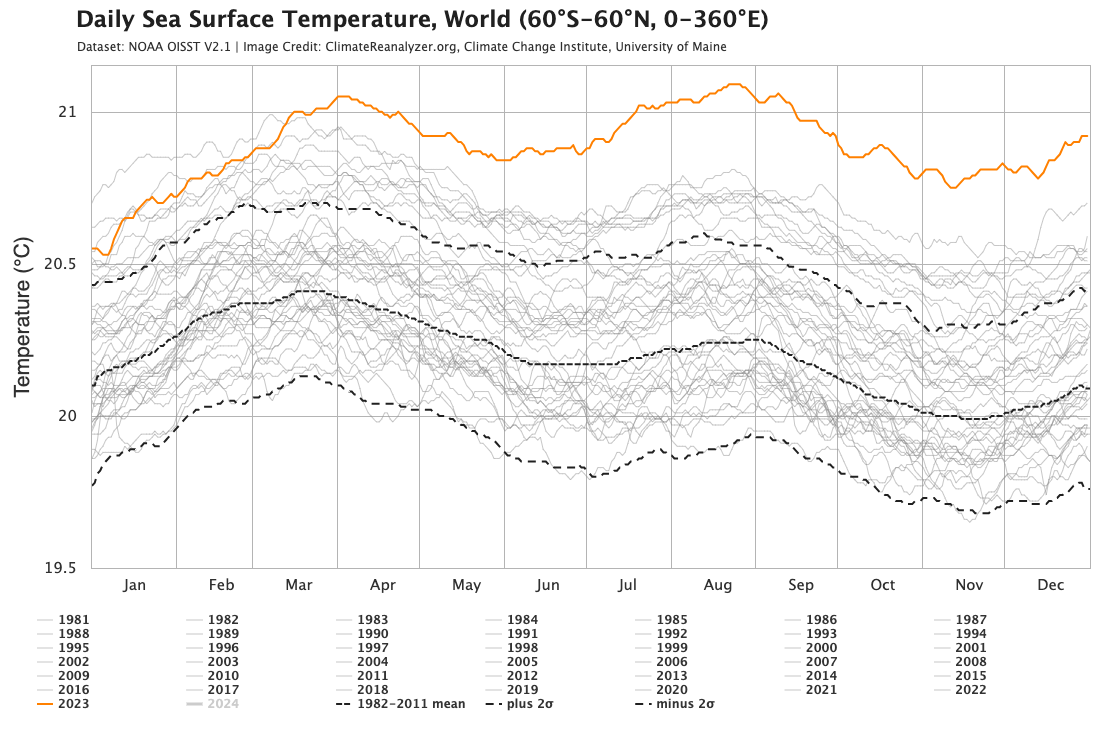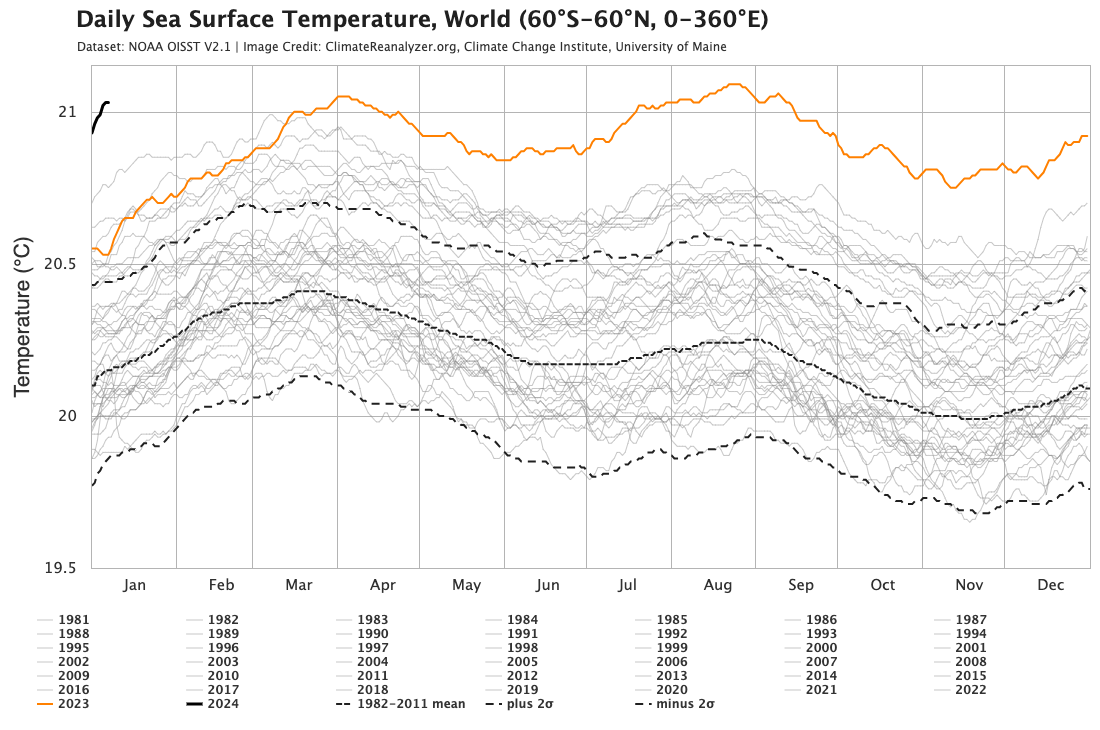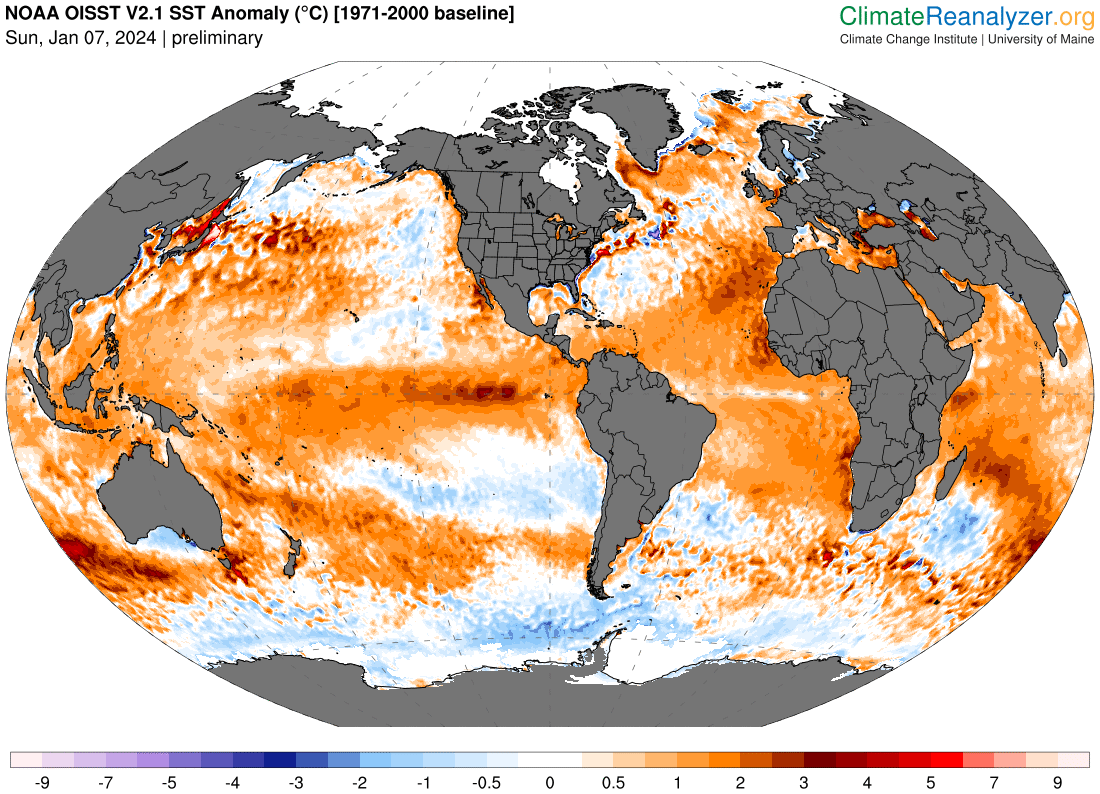Record global ocean warmth persists into 2024
Earth’s oceans are having their warmest start to a year on record as El Niño and climate change combine to produce unrivalled early-January sea surface temperatures across the planet.
Last year was the warmest year on record for Earth’s global oceans, with sea surface temperatures running at record high levels from mid-March until the end of the year. This unprecedented global ocean heat was caused in part by the warming effects of climate change and El Niño.

Image: Daily global sea surface temperature anomalies from 1981 to 2023. The orange line show that 2023 was the highest on record from the middle of March until the of the year. Source: ClimareReanalyzer.org
With El Niño and climate change still excerpting their warming influence into the opening month of 2024, we have continued to see a trend of record-breaking warmth in Earth’s oceans into the new year. The chart below shows the same data as the chart above, but with 2024 on there as well.

Image: Daily global sea surface temperature anomalies from 1981 to 2024. The orange line shows 2023 and the dark black line represents 2024 to date. Source: ClimateReanalyzer.org
One thing that stands out on the graph above is how far the little black line representing 2024 sits above all other lines for the same time of year. This shows that the start of 2024 is significantly warmer than early January from every other year in this dataset.

Image: Global sea surface temperature anomaly on January 7, 2024. Source: ClimateReanalyzer.org
It’s too early to know if the record warm start to 2024 will be the beginning of another warmest year on record for Earth’s oceans. One thing that may work against this being another record warm year is the possibility of La Niña returning to the Pacific Ocean in 2024, which would cool a large area of the equatorial Pacific.
Only time will tell how long Earth’s global ocean temperature stays at record-breaking levels. But for the near-future, ocean temperature anomaly maps will continue to show a ‘sea of red’ as our planet’s oceans remain exceptionally warmer than usual.